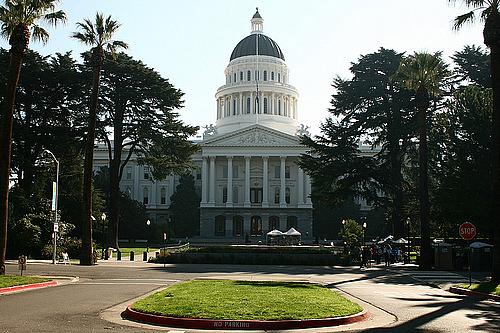With Medi-Cal set to expand, Gov. Brown leaves provider reimbursement cuts intact

When California’s Governor Jerry Brown announced the latest budget last week, the plan contained some good news for new Medi-Cal recipients: They will be entitled to the same health benefits as those already covered by the state’s low-income health program.
Even so, some are wondering whether there will be enough doctors and other medical professionals to provide care to a rapidly expanding patient population. Health provider groups are fighting a long-running court battle over the state’s 2011 Medi-Cal fee cuts, and they argue that if California’s reimbursement reductions are allowed to stand, the state’s planned Medicaid expansion under the Affordable Care Act could be thwarted from the start.
Paul Phinney, president of the California Medical Association, for instance, said that California’s approval of benefits for new Medi-Cal patients, coupled with cuts in reimbursement rates, is “nothing more than an empty promise with an insurance card.”
Under the expansion of Medicaid under the Affordable Care Act, an expected 1.4 million Californians will become newly eligible for Medi-Cal, according to UC Berkeley’s Center for Labor Research and Education. Currently, an estimated 2.5 million Californians are eligible for Medi-Cal but are not enrolled. More than 500,000 residents have enrolled in the state’s Bridge to Reform program since it was launched in 2010 as part of an effort to pave the way for the larger Medi-Cal expansion.
While the state’s economic outlook may be brightening, Brown’s May budget revision reveals no plans to reinstate higher provider payments. California’s Medicaid reimbursement rates are already some of the lowest in the country. While a court ruling is expected soon, legislators are now advancing two bills to reverse the cuts. Brown, for his part, has vowed to veto any such bill that makes it to his desk.
Even if the state is on the road to solvency, Gov. Brown insists there’s not enough money to restore earlier spending levels. At last week’s budget press conference, Brown spoke with characteristic bluntness when asked about the possibility of unwinding earlier cuts to social services. “The money is not there,” Brown said. “Anybody who thinks there is spare change around has not read the budget.”
Brown portrays himself as holding the line against profligate spenders. “Everybody wants to see more spending,” Brown said. “That’s what this place is — it’s a big spending machine. You need something? Come here and see if you can get it. But I’m the backstop at the end.”
But providers who accept Medi-Cal patients say the cuts add insult to injury. According to the California HealthCare Foundation, the state ranks 46th in the fees it pays, with the state’s Medicaid fees averaging 56 percent of the Medicare-allowed charge.
Those low rates help explain why physicians in California are less likely to have Medi-Cal patients and much less likely to accept new Medi-Cal patients. According to a 2010 report from the California HealthCare Foundation, 90 percent of physicians in the state are accepting new patients but only 57 percent are accepting new Medi-Cal patients. The report also found that 25 percent of physicians are providing care to 80 percent of Medi-Cal patients.
And that was before the legislature passed the 10 percent rate cuts, which are retroactive to 2011, meaning that as the state claws back the money, providers could face rate cuts of at least 15 percent for the next couple years. It’s not hard to imagine even fewer doctors accepting Medi-Cal patients after the cuts are implemented, even as the numbers of such patients in the state balloons under the Affordable Care Act.
Carmella Gutierrez, president of Californians for Patient Care, said her group was “deeply disappointed the Brown Administration failed to reverse pending state cuts in Medi-Cal reimbursements, which would hit nursing facilities especially hard:
In addition to threatening access to physicians, these pending cuts would also force many hospital-based skilled nursing facilities to reduce the number of elderly and disabled patients they serve or to close their doors altogether, displacing their patients. This would be devastating for families that rely on these specialized facilities to care for elderly relatives close to home. And for people in rural areas, these facilities are often the only place to access highly complex physical and behavioral care.
And on Friday, two state assembly members from the Central Valley held a news conference in which they urged Brown to stop cuts to skilled nursing facilities.
So why is Brown, a supporter of the Affordable Care Act’s goals, sticking to his guns? Gerald Kominski, professor at UCLA’s Fielding School of Public Health, shares one possible explanation via Matthew Wayt of California Healthline:
According to Kominski, Brown could have eliminated the cut from his budget proposal, considering the state's “favorable budget outlook.” He said that Brown might have kept the reduction because the Affordable Care Act provides a payment bump for doctors so that their reimbursements match that of Medicare. But that increase lasts only two years and will benefit only certain primary care physicians.
Will the state face an even stronger budget outlook two years from now, when the federal funding takes a dip, prompting the reversal of the Medi-Cal cuts? That’s one scenario. Another is that health providers secure a court victory in the days or weeks to come. And then there’s always that Democratic supermajority to keep tabs on – they could overturn Brown’s veto of a bill that rescinds the provider payment cuts.
Image by praynito via Flickr
